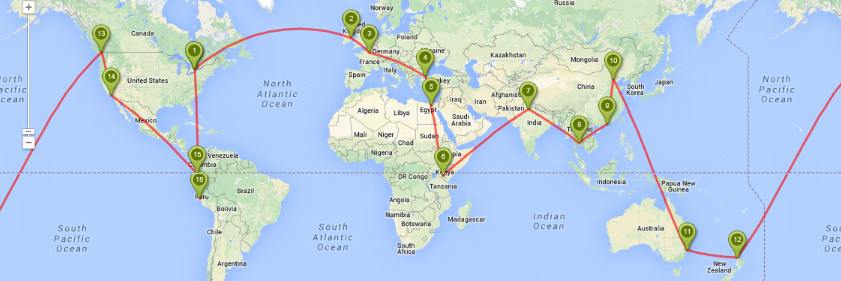Each day, many of us leave our homes to go to work or school, go for a walk in the park, and even go camping in the forests around our homes. Do any of us imagine that we won’t return home with all of our arms and legs?
In the 1970’s, Southeast Asia was in turmoil. Between the Vietnam War and unrest in Cambodia, bombs, gunfire, and landmines were a daily reality. Thousands of tons of explosives were dropped from planes, and hundreds of thousands of landmines were planted in Cambodia. Despite the fact that peace came to Cambodia just 15 years ago, the country remains littered with unexploded ordinance (such as bombs and other explosive shells) and undocumented mine fields.

Today it is still a regular occurrence for accidents to happen. In rural Cambodia, it is not uncommon for a villager – or if they’re lucky, some livestock – to step on a landmine causing it to explode. This is the reality of Cambodians throughout the country. And for tourists who are used to going wherever they want, whenever they want without giving landmines a second thought, this can be hazardous to their health to say the least. The travel-wisdom for Cambodia is to not leave the tourist trail without a local guide. For instance, in Thailand you can head north to Chang Mai and venture out into the jungle without a guide (wouldn’t recommend it!) without the fear of stepping on a mine.
As part of our understanding of the history and context of Cambodia, we visited the Cambodia Landmine Museum about 40 minutes north of Siem Reap which was founded and is run by a Cambodian national, Aki Ra.

Aki Ra has quite an interesting story. His family was killed by the Khmer Rouge before he was 5 years old, and he was taken and trained to be a child soldier. At the age of 10 he received his first gun and was trained to fight; within a short time he was then trained to deploy landmines, and by his own words, he laid thousands of them. The minefields are scattered all over Cambodia, and none of them were documented.
In 1987 Aki Ra defected and joined the Vietnamese Army to fight against the Khmer Rouge. Because he had such good knowledge of landmines, he was eventually trained to deactivate mines and unexploded ordinances (e.g. bombs and other unexploded shells). In the early days this work was done with a sharp stick and some rudimentary tools like pliers and screw drivers.

Others tried the same approach to clear mines, and some were not as skilled as Aki Ra which resulted in accidental explosions, injuries and sometimes death. The Cambodian government ordered Aki Ra to stop until he was trained in the internationally recognized methods for removing landmines. Now, he and his team use modern equipment, methods and protective gear as they go about their work.
Since there is no documentation on where mines were laid, and how many bombs were dropped in Cambodia, there is no way to tell the number of unexploded munitions which are still out there. Aki Ra estimates somewhere between 3 – 5 million devices exist today.
As Aki Ra and his team cleared devices, he started to collect them with the goal of creating a museum in order to raise awareness of this deadly problem. The museum houses hundreds of devices including anti-tank and anti-personnel mines, plus deactivated bombs, grenades, and other explosives.

Today, Aki Ra continues his work to make Cambodia a safer place for all. In 2010 he was selected as a Top 10 CNN Hero.
In addition, his late wife founded and set up an orphanage for Cambodian children, located on the same property as the museum. Children who have no place to go live at the orphanage and receive all the necessities including food, shelter, and basic education.
I’ve been to a lot of museums over the course of our trip, and never expected to encounter a landmine museum. This small facility gave me big insight into the horror that landmines can cause, the ongoing treat of death and dismemberment, and the dedicated people of Cambodia working to rid the country of these deadly hazards.
Throughout Siem Reap we also saw small musical groups playing traditional Cambodian music, and our trip to the landmine museum helped me to understand why these musicians were playing.

With dedicated people like Aki Ra and his team – and others across Cambodia – one day the country can once again be a safe place for all.






Comments
4 responses to “Things that go “boom” in the night…”
Thank you Oliver for this very moving blog! Hopefully these landmines will be removed completely in the not too distant future! Mom P. Love to all!
Wonderful lesson in gratitude. Thank you Oliver! Marina
What a courageous and positive people. Could we as a people be as brave? We are known as the ‘nice’ country …maybe we could….
The lessons that you are sharing are wonderful. Thank you.
Hi, Oliver, sadly, your posting is a reminder of the horrific consequences of war for generations to come. Aki Ra and his supporters are truly heroes to risk their lives to make living less dangerous for others. Thank you for telling us.